Why Your Social Media Marketing Isn’t Getting Results in 2025 (With Easy Fixes)
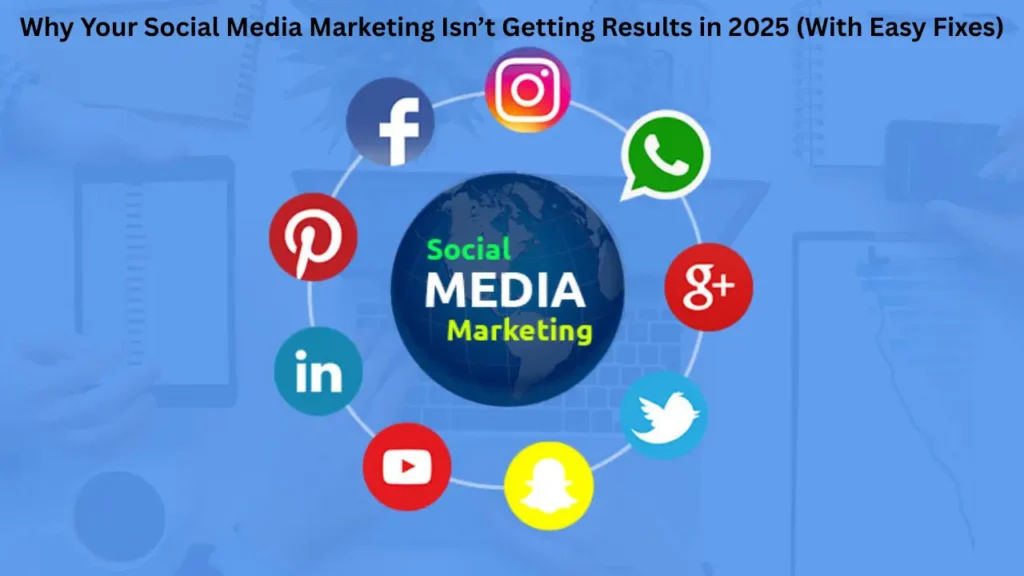
If your social media marketing isn’t getting results in 2025, you’re likely frustrated and wondering what you’re doing wrong. This blog is a complete walkthrough that shows you exactly what’s going wrong with your social media strategy, why your posts aren’t getting the reach or engagement you expected, and how you can fix it with simple, clear steps — even if you’re not a marketing expert. Whether you’re a small business owner, a freelancer, or someone trying to grow a personal brand, this guide is for you. In today’s world, posting content is not enough. You can have a great-looking design, write nice captions, and still see no growth, no likes, no comments — and worst of all, no sales. According to a recent 2025 report by Hootsuite, over 61% of social media marketers say engagement rates have dropped despite increased posting efforts. This means more content doesn’t always mean better results. The real issue often lies in the strategy — or the lack of one. You might be making some common mistakes without even realizing it: posting at the wrong time, targeting the wrong audience, using the same strategy for every platform, or not giving value to your followers. These small errors can lead to poor engagement, low visibility, and wasted time. In this blog, we’ll break down the most common reasons why your social media strategy fails, and we’ll explain how to fix each of them with clear, beginner-friendly tips. We’ll also dive into specific problems with platforms like Instagram and Facebook, where many people struggle the most. By the end of this guide, you’ll understand what’s blocking your growth, how to adjust your strategy, and how to start getting real results from your social media efforts. Let’s uncover the mistakes and build a smarter, stronger strategy for 2025 and beyond. Why Social Media Marketing Strategy Fails or Stops Working A social media marketing strategy often fails or stops working not because the platforms are broken but because the approach becomes outdated, unclear, or disconnected from the audience. Many people start strong with good intentions, but over time, they lose direction, skip planning, or repeat the same mistakes without noticing. One common reason for failure is lack of purpose. If you’re posting without a clear goal like getting website visits, building a brand, or increasing sales — your content won’t lead to any real results. You might get likes, but they don’t mean much if they’re not tied to something bigger. Another issue is not adapting to changes. Social media platforms update their algorithms, trends shift, and user behavior changes. What worked last year may not work now. If you’re still using the same strategy from before without checking performance or feedback, you’ll fall behind. Inconsistent posting is another reason. If you disappear for weeks and then post randomly, people lose interest, and so do the platforms. Social media rewards consistency — not just frequency, but steady effort over time. Also, poor audience targeting can cause your strategy to flop. If you’re speaking to the wrong people or using language and visuals that don’t match your audience, your message won’t land. Lastly, ignoring analytics leads to guesswork. Without reviewing what’s working and what’s not, you might keep repeating the same mistakes without even realizing it. Failing strategy isn’t always about bad content, it’s about missing direction, not evolving, or losing touch with your audience. How Does a Successful Social Media Marketing Strategy Look Like in 2025? A successful social media marketing strategy in 2025 includes setting clear goals, creating content that focuses on the audience, posting at optimal times, using platform-specific formats, and tracking performance regularly to improve results and return on investment. Many people just think that only posting regularly on social media is enough to achieve success. However, a successful social media strategy in 2025 goes beyond frequent updates. It’s about creating a clear path that leads to measurable results like increased engagement, more website traffic, or higher sales. Here’s what defines a strong and result-oriented social media strategy today: 1. Clear and Specific Goals The first step is knowing what you want to achieve. Without goals, your efforts will be scattered and ineffective. Ask yourself: Having a specific goal shapes the type of content you create and how you measure success. 2. Audience-Centered Content Great content isn’t just about looking good — it should connect with your audience by addressing what they care about and what they’re looking for. A balanced content strategy includes: The focus should always be on delivering value before asking for anything in return. 3. Posting at the Right Time Timing your posts can make a big difference. Sharing content when your audience is most active helps you get more views, likes, and comments. To figure out the best times to post, you can use insights from your social media platforms or scheduling tools—they show you when your followers are most engaged. 4. Tracking and Improving Performance Successful marketers constantly monitor results. They look at: By reviewing performance regularly, they adjust their strategies for better outcomes. 5. Using Platform-Optimized Formats Each platform favors different types of content. In 2025, short-form videos (like Reels), carousels, and interactive features are among the top performers. Using the right format for each platform helps improve visibility and engagement. Reason #1: Lack of Clear Goals Is Killing Your Social Media Results A social media strategy fails without clear goals. To fix it, set specific, measurable goals, align content with those goals, and track progress regularly. One of the most common reasons social media strategies fail is the lack of clear and realistic goals. Many people post content just to stay active, without any clear direction or outcome in mind. But if you don’t know what you’re aiming for, how will you know if you’re getting there? For example, if your goal is to grow your business, you might want more website visitors, product inquiries, or brand awareness. Simply posting about your product or sharing random
How Digital Marketing Brings More Sales Than Traditional Marketing

Digital marketing isn’t just about running ads or posting on social media — it’s about reaching the right people, growing your sales, and building long-term success. In this post, we break down how smart digital strategies are helping businesses boost revenue in 2025 faster and more affordably than ever before. Whether you’re just starting or ready to scale, this guide shows you exactly how digital marketing can fuel real business growth.
Beginner’s Guide to Social Media Marketing Strategy in 2025 (Step-by-Step)
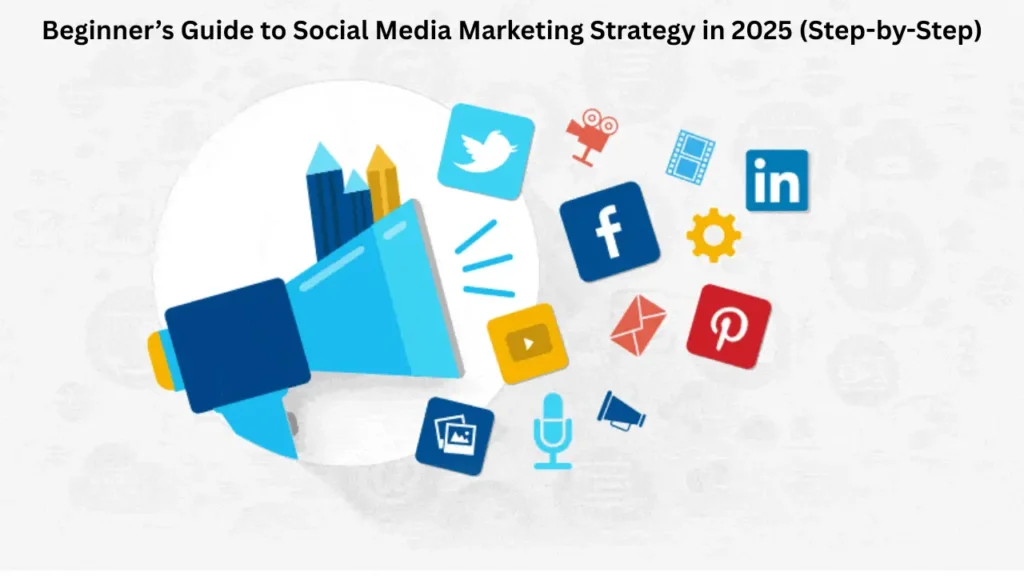
Social media marketing strategy in 2025 is no longer optional—it’s a must-have for any business or personal brand hoping to grow online. With competition rising and user attention shrinking, a random posting habit just doesn’t cut it anymore. This beginner’s guide offers a clear, step-by-step walkthrough to help you build a smart, sustainable, and effective social media marketing plan—even if you’re starting from scratch. In 2025, over 5.2 billion people worldwide use social media—nearly two-thirds of the global population. In Saudi Arabia, usage is even higher, with almost the entire population active online. With millions of posts shared every single minute, a random posting habit gets lost in the noise. A strategy isn’t optional—it’s survival. Algorithms now favor UGC and short-form content, so an engagement strategy rooted in community is essential. In this guide, you’ll discover how to define your goals, understanding how to create social media plan 2025 and your audience, and choose the right platforms for your message. You’ll also learn how to build a content plan that actually works, increases engagement, and enhances your online visibility without wasting time or budget. Whether you’re promoting a small business, launching a personal project, or managing a new brand, this plan is built to simplify the entire process. The world of social media is moving fast. Trends come and go, but a clear strategy rooted in purpose, audience understanding, and content consistency remains timeless. This blog won’t just give you theory—it will equip you with real, actionable steps to improve your digital presence, grow your following, and stay ahead in a constantly evolving space. So, if you’ve been overwhelmed or unsure where to begin, you’re in the right place. By the end, you’ll have a complete beginner’s guide to social media marketing built for 2025—a plan that helps you cut through noise, connect with the right people, and move your goals forward. Let’s get started with building your roadmap to smarter platform strategy and long-term success. What is Social Media Marketing (SMM)? Social Media Marketing (SMM) is the use of platforms like Facebook, Instagram, TikTok, and LinkedIn to promote a brand, engage an audience, and drive results such as sales, leads, or website traffic. It focuses on creating valuable content, running ads, and building community to grow online presence. What is Social Media Optimization (SMO)? Social Media Optimization (SMO) is the process of improving social content for maximum visibility and engagement. It includes using the right hashtags, posting at the best times, designing mobile-friendly visuals, and encouraging shares to boost the impact of SMM campaigns. SMM vs SMO: What’s the Difference? What is SEO (Search Engine Optimization)? SEO (Search Engine Optimization) is the process of improving a website so it ranks higher on search engines like Google. It involves optimizing content, keywords, site structure, and backlinks to increase visibility, attract organic traffic, and generate qualified leads without paying for ads. In 2025, SEO remains a core part of digital marketing because it helps businesses cut ad costs and achieve long-term growth. While paid ads bring quick results, SEO builds sustainable visibility and credibility. Businesses in Saudi Arabia often compare SEO and SEM cost in Saudi Arabia to decide whether to focus on organic growth, paid ads, or a mix of both. SEO vs SEM: What’s the Difference? Why You Need a Social Media Marketing(SMM) Strategy in 2025 A social media marketing strategy in 2025 helps you post with purpose, reach your target audience, and achieve clear goals. It improves engagement, saves time, and leads to better growth across all platforms. A strong social media marketing strategy in 2025 is more than just a nice-to-have—it’s the foundation for online success. Whether you’re a small business, freelancer, or startup, having a well-structured social media marketing plan helps you reach the right people and stand out in a competitive space. Why a Strategy Matters With millions of posts shared every minute, random posting won’t cut it anymore. A strategy helps you: Most small Saudi businesses spend SAR 5,000–25,000 monthly on social media management + ads. Key Benefits of a Solid Plan In 2025, platforms are smarter. Algorithms favor high-quality, relevant content. Without a strategy, your message gets lost. But with one, you guide every post toward a goal—building brand awareness, increasing engagement, or driving traffic. Avoid Wasting Time Many beginners get stuck chasing trends. A real plan keeps you focused, helps you build real connections, and saves time and energy. Understanding Your Target Audience in 2025 To understand your target audience in 2025, focus on their age, interests, challenges, and platform behavior. Use tools like insights, surveys, and comments to guide your content and connect effectively. Knowing your target audience is the backbone of any successful social media marketing plan. If you don’t understand who you’re talking to, your content will miss the mark—no matter how good it looks. Why Audience Understanding Matters Social media in 2025 is driven by relevance. Platforms prioritize content that fits user interests. If your posts speak directly to your ideal customer’s needs, they’ll be seen more and perform better. Key Audience Insights to Discover How to Learn About Your Audience Once you understand your audience, your content becomes more personal and useful. This builds trust and improves engagement. Setting SMART Goals for Your Social Media Plan SMART goals make your social media strategy effective by helping you set specific, trackable, and realistic targets. They guide content, measure progress, and lead to better results. Set KPIs (Key Performance Indicators) for every platform—like aiming for a 10% engagement rate on Instagram within 60 days. Goals are what turn random activity into strategy. In 2025, setting SMART goals ensures your social media marketing plan stays on track and delivers real results. What Are SMART Goals? SMART stands for: Why SMART Goals Matter Without goals, you’re guessing. SMART goals help you: Examples of SMART Goals in 2025 Start with 1–2 goals. Focus on ones that bring real value, not just vanity metrics like likes. What is a KPI in Social
Why Digital Marketing Strategy Is Failing in 2025 and How to Fix It
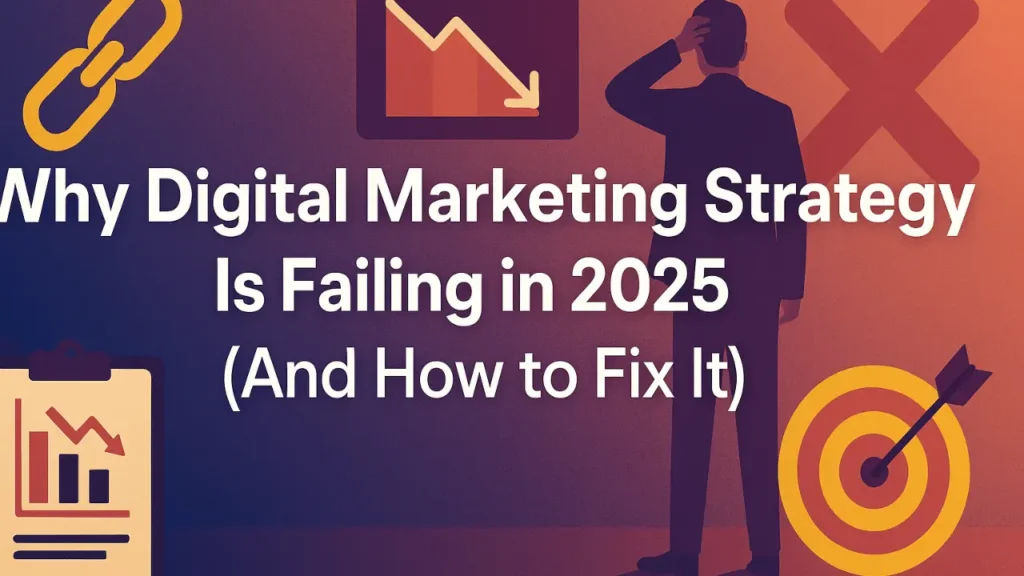
In 2025, more businesses than ever are investing in digital marketing. Yet, many of them are asking the same frustrating question: why is my digital marketing strategy failing? Despite having a website, running ads, and posting on social media, the results just don’t match the effort. If this feels familiar, you’re definitely not the only one and chances are, the issue isn’t how hard you’re trying. It’s the direction. Digital marketing today isn’t just about showing up online — it’s about standing out and making real connections. It’s about understanding how the landscape has shifted. Many teams unknowingly repeat digital marketing mistakes that are quietly holding their business back. These include using outdated SEO methods, creating content without understanding customer intent, or launching campaigns without clear goals. Over time, these mistakes pile up, and the strategy starts to break down. There are also serious digital marketing blunders that are stopping your success right at the starting line. For example, relying too much on paid ads without measuring ROI, ignoring mobile users, or sending out generic email campaigns that no one reads. These are not minor issues — they directly affect your visibility, engagement, and conversions. The problem is not always visible right away. A campaign may look good on the surface, but deep down, it may lack focus, personalization, or proper tracking. And that’s where most businesses lose their edge. The digital space in 2025 is competitive, fast-moving, and unforgiving to guesswork. But the real value lies in this: every mistake has a fix. In this post, we’ll explore the most common reasons why digital marketing strategies are underperforming today — and more importantly, how you can correct each one. You’ll walk away with clear solutions, practical insights, and a direction that actually works. If your current marketing isn’t bringing results, this guide will show you exactly where things are going wrong and how to turn it around. What Is a Digital Marketing Strategy — and Why It’s Failing in 2025? A digital marketing strategy is your brand’s game plan for reaching people online. It includes everything from your website content, SEO, and email campaigns to social media, paid ads, and how you engage with customers. A good strategy ties all these elements together to drive consistent traffic, build trust, and turn visitors into buyers. But in 2025, many strategies are falling flat. Why? Because the digital world is changing faster than most businesses can keep up. User behavior has shifted; people are using voice search, expecting personalized content, and jumping between platforms before making a decision. Yet, many brands still rely on outdated tactics, guesswork, or a one-size-fits-all approach. What’s making things worse is the growing gap between tools and understanding. Marketers might invest in automation, analytics, or AI tools, but without knowing how to use them effectively, the result is robotic campaigns and missed opportunities. Add to this a lack of A/B testing, poor tracking of real KPIs, and ignoring user intent — and the entire strategy starts to crumble. In short, a digital marketing strategy isn’t failing because digital marketing doesn’t work anymore. It’s failing because businesses aren’t adapting to how customers behave and what they expect in 2025. A bad digital marketing strategy ruins all your efforts and investments. Top Reasons Your Digital Marketing Strategy Is Failing in 2025 (And How to Fix Them) Poor Audience Targeting Is Wasting Your Entire Budget One of the biggest reasons digital marketing strategies are failing in 2025 is poor audience targeting. Many businesses are still relying on outdated assumptions about who their ideal customers are. In a time where user behavior, preferences, and platforms evolve quickly, using the wrong targeting approach can waste your entire budget without producing meaningful results. Why Audience Targeting Matters When your message lands in front of the wrong people, it’s like talking to a crowd that’s just not listening. According to HubSpot’s 2024 State of Marketing Report, 42% of marketers admit they struggle to reach the right audience. In another study by Forrester, campaigns with precise audience segmentation achieved double the ROI compared to broadly targeted campaigns. These stats clearly show that accurate targeting directly influences marketing success. Common Mistakes in Audience Targeting How to Fix It When you target with precision, every part of your digital marketing strategy becomes more efficient — your cost per acquisition drops, your content becomes more relevant, and your results become measurable and scalable. Over-Reliance on Paid Ads Without Strong Organic Base Relying too much on paid ads without building organic traffic weakens your marketing. When ads stop, traffic stops. A solid strategy blends both paid ads and organic SEO — so you get quick results now and steady leads over time. In 2025, many businesses are depending too much on paid ads like Google Ads or Facebook Ads to get traffic. While paid ads can bring quick results, they are not a long-term solution if your website or content isn’t strong. Without a solid base of organic traffic, you are forced to keep spending more to stay visible. Paid campaigns also stop working the moment you stop paying. If you haven’t built authority through SEO(Search Engine Optimization) or content, there’s no backup. This leads to unstable traffic and unreliable leads. Common Signs of Over-Reliance: How to Fix It: Balancing paid ads with organic efforts gives you consistent, cost-effective growth. Relying on only one channel makes your entire strategy fragile. Ignoring Mobile Optimization Mobile optimization is all about making sure your website works smoothly and looks great on phones and tablets. It improves loading speed, layout, and user experience to reduce bounce rates and increase conversions. In 2025, more than 65% of users browse and shop using mobile devices. Yet many businesses still haven’t made their websites mobile-friendly. This is a major reason why digital marketing strategies fail. If your website doesn’t load fast, fit screens properly, or allow smooth navigation on phones, users will leave immediately. Google also ranks mobile-optimized websites higher, so ignoring this hurts
The Ultimate Guide to PPC Campaign Structures That Actually Convert in 2025
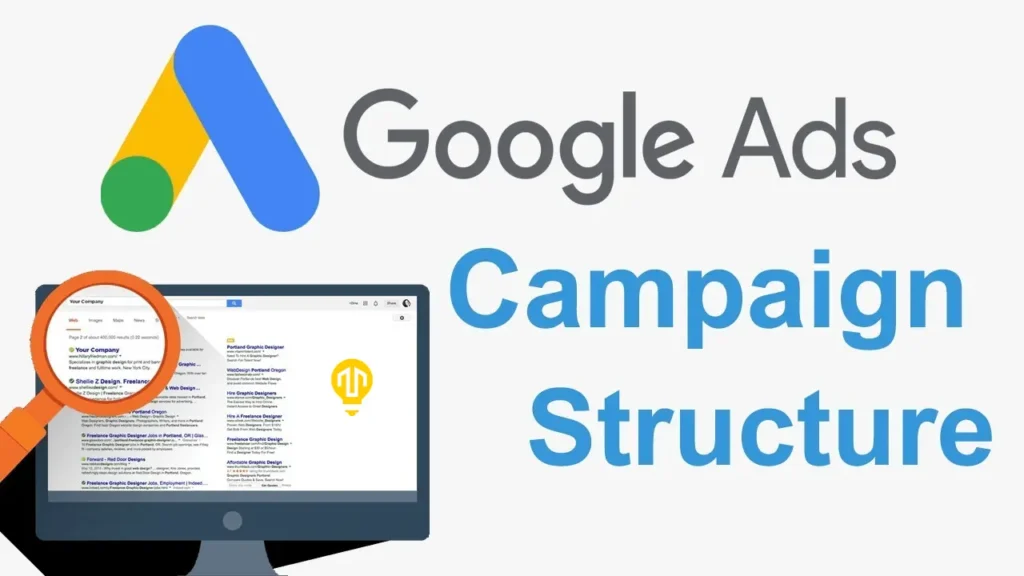
Struggling to get results from your Google Ads? This guide breaks down how to build a smart PPC campaign structure in 2025 that actually drives clicks and conversions — without wasting budget. Perfect for marketers, small business owners, and anyone ready to improve ad performance.
Top Google Ads Mistakes That Are Killing Your ROI in 2025 (And How to Fix Them)
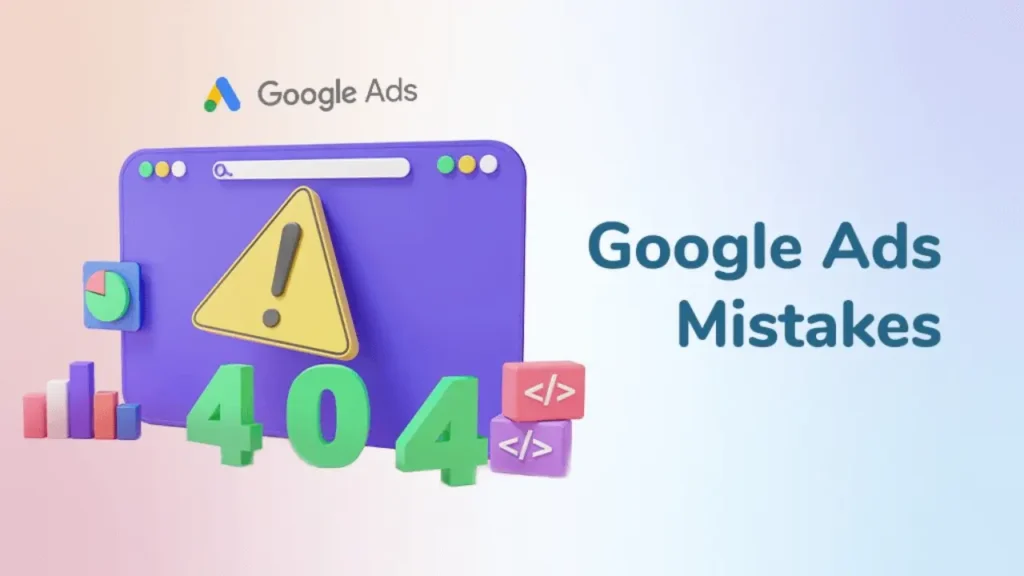
Google Ads mistakes in 2025 aren’t just minor slip-ups—they’re often the hidden reason behind poor ROI, high ad spend, and low conversions. Whether you’re a business owner managing your own ads or a marketer running client campaigns, this guide will walk you through the most common (yet costly) errors businesses make—and how to fix them with clarity and purpose. You’ll get a complete understanding of where things go wrong and how to course-correct before more budget slips away. What you’ll learn in this blog: In 2025, running ads without a clear strategy can burn through your budget faster than ever. The average cost-per-click (CPC) has jumped to $5.26, while conversion rates are dropping for campaigns that lack precision. And according to new industry insights, around 40% of ad budgets are still being wasted on ineffective targeting, irrelevant clicks, or broken funnels. But it’s not just about keywords or creativity. Many of the biggest mistakes happen deeper—at the campaign structure or ad group level—where poor segmentation, misaligned goals, or confusing account hierarchies can quietly destroy your results. This blog will also break down those structural issues in detail, so you’re not just fixing the surface, but improving your Google Ads from the ground up. If you’ve ever found yourself thinking, “Why aren’t my Google Ads getting results?” you’re not alone. You’re about to get your answer. And more importantly, the fixes that actually make a difference. Let’s dive in. Why Google Ads ROI Is Declining in 2025 Google Ads ROI is falling in 2025 due to rising ad costs, poor keyword targeting, weak ad copy, disorganized campaigns, and a lack of proper conversion tracking. These issues lead to wasted spend and fewer qualified leads. If you’re running Google Ads in 2025 and wondering why your returns feel lower than before, you’re not alone. Many businesses are spending more than ever, but getting less in return. The problem isn’t that Google Ads no longer works—it’s that the way it works has changed, and many advertisers haven’t kept up. Let’s break this down simply. 1. Costs Are Rising The cost to run ads is going up. There’s more competition for the same keywords, which means you’re paying more for each click even when those clicks don’t turn into customers. 2. Poor Targeting Many ads are still targeting the wrong people. If your keywords are too broad or not matched to your ideal customer, you’ll get clicks from people who never intended to buy. 3. Bad Tracking Without proper tracking, it’s hard to know which ads are bringing results. Some businesses are still running campaigns without clear goals or without tracking real conversions, like purchases or leads. 4. Weak Ad Content If your ads don’t speak directly to your audience or highlight real value, people scroll past them. That means wasted impressions and lower click-through rates. 5. Unfocused Campaigns Many accounts are disorganized. Campaigns and ad groups are too broad or mixed with unrelated topics, which hurts relevance—and that raises costs. The result? More money going out, but fewer results coming in. If these problems aren’t fixed, ROI will continue to fall, no matter how good your product or service is. Below is a complete list of the most common Google Ads mistakes businesses make in 2025 each of which we’ll explain in detail to help you fix and avoid them. Mistake #1 — Poor Keyword Targeting (Or Going Too Broad) Poor keyword targeting means using vague or broad terms that attract clicks from people who aren’t likely to buy. This wastes the budget. To fix it, use exact or phrase match keywords, negative keywords, and check your search terms regularly. One of the biggest ways businesses lose money in Google Ads is by using the wrong keywords—or targeting too many people with broad terms. It may seem like casting a wide net brings more customers, but in reality, it usually attracts the wrong audience. For example, if you sell handmade birthday cakes and use the keyword “cake,” your ad could appear for someone searching for cake recipes or cake decoration ideas—not someone looking to place an order. These types of broad keywords often bring in lots of clicks, but very few actual buyers. That means you’re paying for traffic that doesn’t convert. To fix this, use more focused keywords that reflect what your customer is actually searching for. Use phrase match or exact match keywords instead of broad match. This helps limit your ad to only the most relevant searches. Also, make use of negative keywords. These block your ad from showing searches you don’t want, like “free cake samples” or “cake jobs.” Finally, check your search terms report regularly. It tells you the exact words people searched for before they clicked on your ad. You’ll likely find terms you should block or opportunities to add better keywords. Targeting is about quality, not quantity. Fewer, better clicks are always more valuable than lots of bad ones. Mistake #2 — Ignoring Audience Targeting Options Audience targeting helps you show your ad to people more likely to become customers. It reduces wasted spend by filtering out low-intent traffic and improves your ad’s performance by focusing on specific interests, behaviors, or past actions. Many advertisers still rely only on keywords to reach people, but audience targeting has become just as important. If you skip this step, your ads may show to people who aren’t even close to becoming customers. For example, someone searching “office chairs” could be a student doing research, or a business owner ready to buy ten chairs today. With audience targeting, you can show your ad to the second person and skip the first. Google Ads offers powerful tools to help you filter who sees your ad. You can target by: You can also build custom audiences based on specific behaviors—like people searching for certain services or visiting competitor sites. Using these filters helps your ad reach people who are more likely to take action. You waste less money, and your click-through
How Much Does Google Ads Cost for Small Businesses in 2025? A Complete Budgeting Guide
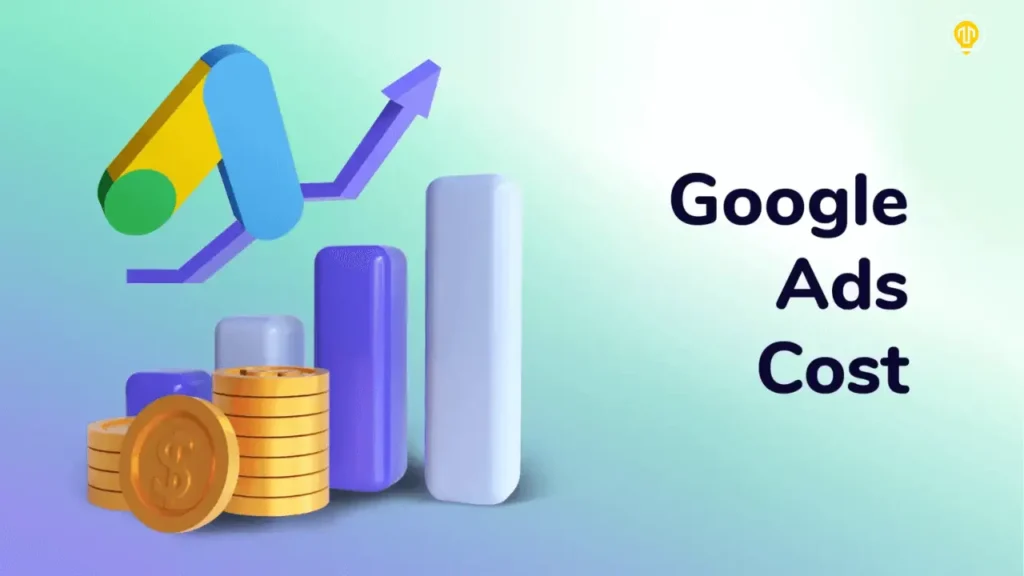
How much does Google Ads cost for small businesses in 2025? That’s the question every growing business wants answered — and this guide delivers exactly that. In this complete walkthrough, you’ll learn how Google Ads pricing works today, what factors impact your budget, realistic cost expectations, and how to run profitable ad campaigns without overspending. Whether you’re a startup or an established small business, this guide will help you plan smarter, advertise better, and save money. Running Google Ads in 2025 isn’t just about picking a budget and pressing “go.” It’s about strategy, precision, and knowing exactly what you’re investing in. As the digital landscape grows more competitive, especially with AI-powered ad bidding and real-time audience targeting, small businesses can no longer afford to run campaigns blindly. Every click matters, and every dollar must work harder. According to fresh industry data, the average small business now spends between $500 to $5,000 per month on Google Ads, depending on the business size, niche, and location. But here’s where it gets interesting: some businesses pay just $2 per click, while others in high-stakes industries like law or insurance pay well over $15 per click. Why the massive difference? It all comes down to how well your campaigns are set up, your targeting strategy, ad quality, and your bidding approach. A well-structured campaign with focused targeting and strong ad relevance can help you compete even with a smaller budget. And here’s what many small business owners overlook: Google doesn’t reward the biggest spender — it rewards the smartest. That means a local bakery with a $500 monthly budget can outperform a nationwide chain if its campaigns are better optimized. In this guide, we’ll break down exactly how to stay competitive without overspending. You’ll discover real pricing insights, budget-saving tactics, and expert advice tailored for small businesses in 2025 — so you can stop guessing and start growing. What Is Google Ads and How Does It Work in 2025? Google Ads is an online advertising platform from Google that lets you show your business to people who are searching for your product or service. In simple words, it helps you get your business in front of the right people — at the right time — when they’re actively searching on Google. In 2025, Google Ads still runs on a pay-per-click model — which simply means you’re only charged when someone actually clicks on your ad. So, you’re not just paying for views, but for real interest. You can also choose other models like CPM (cost per thousand views) or CPA (cost per action), but for small businesses, PPC is the most common choice. You can choose from different types of campaigns depending on your goal — whether you want more website visits, calls, sales, or brand awareness. The best part? You don’t need a huge budget to start. You set your own daily or monthly budget, choose your audience, write your ad, and Google shows it to the right people. Is Google Ads Still Worth It for Small Businesses Today? Yes, Google Ads is still worth it for small businesses even today, if it’s done right. It helps reach people who are already searching for your product or service, offering faster results than SEO when managed properly. Let’s be honest. Running a small business isn’t easy. Every rupee (or dollar) you spend has to bring value. That’s where Google Ads can truly help — by putting your business in front of people who are actively searching for what you offer. Imagine someone in your city typing, “best home painter near me” or “buy gym equipment online”. With a smart Google Ads campaign, your business can show up right at the top, ahead of your competitors. That’s powerful — especially for local or niche businesses trying to grow. But here’s the key: it’s not just about throwing money into ads. It’s about: When these things are handled properly, Google Ads is like a shortcut to more calls, visits, sales — even if your website is new or not ranking organically yet. Of course, like any tool, it works best when you know how to use it — or get someone experienced to help. That’s why many small businesses either take time to learn it carefully or hire professionals to manage it for them. Average Google Ads Cost for Small Businesses in 2025 The average cost of Google Ads for small businesses in 2025 ranges from $2 to $4 per click, with monthly spending between $500 to $5,000 depending on industry, competition, and location. Costs vary by business type, but small budgets can still be effective with the right strategy. Many small business owners ask: “How much does Google Ads actually cost?” The truth is, there is no one-size-fits-all answer — but we’ll break it down for you as simply as possible. In 2025, small businesses usually pay between $2 to $4 each time someone clicks on their Google ad. This is called cost-per-click, or CPC; it’s the price for getting real visitors to your site. However, in industries like law, finance, or healthcare, the cost can be much higher — sometimes reaching $10 to $20 per click. Here’s a general idea of average monthly spending: Factors that affect the cost include: Remember, spending more doesn’t always mean better results. Even a small budget can bring great results if the campaign is well-managed and targeted to the right audience. Key Factors That Affect Google Ads Cost Google Ads cost is affected by keyword competition, industry type, ad quality score, location targeting, device used, and seasonal demand. Better targeting and ad quality can reduce your costs and improve performance. Google Ads costs aren’t fixed, and understanding what actually changes your cost can help you make smarter decisions with your ad budget. Many new advertisers are surprised to see different results even when spending the same amount. That’s because Google Ads works like an auction, not a price tag system. Here are the key factors that directly
Influencer Marketing is Evolving: Micro vs. Nano Influencers in 2025
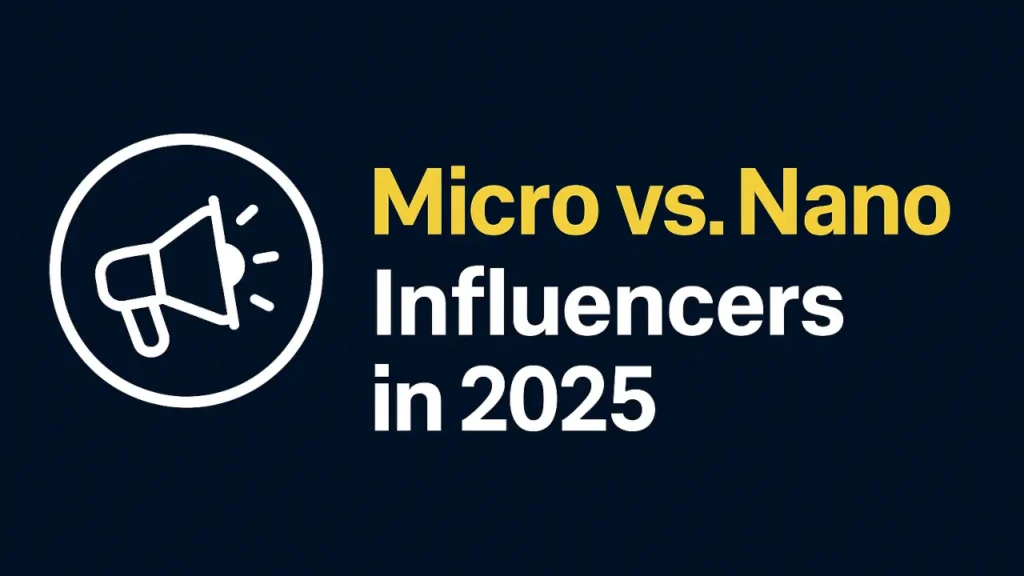
The world of influencer marketing is shifting—and it’s not about who has the biggest following anymore. In 2025, brands are finding more value in real voices with real connections. This piece explores how micro and nano influencers are quietly reshaping the way businesses build trust, drive engagement, and grow their presence online.
Top 7 Affordable Digital Marketing Services in Saudi Arabia for Small Businesses (2025)

Looking for affordable digital marketing services in Saudi Arabia for your small business in 2025? You’re in the right place. This blog walks you through seven trusted and budget-friendly marketing companies that are helping small businesses grow online without draining their wallets. From low-cost SEO in Saudi Arabia to cost-effective PPC campaigns and social media marketing tailored for local audiences, we’ve handpicked the best options to help your brand reach the right people. Whether you’re just starting out or want to scale your current digital presence, this guide will give you clear insights, practical tips, and real service providers to consider. Now, here’s a reality: many small businesses in Saudi Arabia struggle to keep up with the digital race. They know they need to be online — visible on Google, active on Instagram, engaging with potential customers — but budgets are tight. And when you look for help, you’re often bombarded with overpriced agencies or cheap freelancers who vanish after the first campaign. That’s frustrating. And costly. This blog was written for people like you — the entrepreneurs, shop owners, solo founders, and small teams who need results, not just promises. You’ll discover companies that understand what it means to work with lean budgets and still deliver. We’re not just listing names — we’re giving you context: what they offer, how much they charge, and why they might be a fit for your business. By the end of this walkthrough, you’ll be able to confidently choose a digital marketing service that suits your goals, your budget, and your market — without the stress or guesswork. Let’s dive in. Why Digital Marketing Matters for Small Businesses in Saudi Arabia Digital marketing helps small businesses in Saudi Arabia attract more customers, stay visible online, and grow with small budgets. It’s affordable, effective, and essential in today’s digital-first world. If people can’t find your business online, it’s like you don’t exist. This is even more true in Saudi Arabia, where people are glued to their phones — searching for services, scrolling through Instagram, and checking reviews before buying anything. Digital marketing has become a must-have tool for small businesses. It allows you to be where your customers are on Google, social media, and websites without needing a big advertising budget. Why Small Businesses in Saudi Arabia Need Digital Marketing Here’s why going digital is no longer optional for small businesses: What Services Help the Most? Some digital marketing services give especially high returns for small budgets: With support from national programs like Vision 2030, the digital space is opening up for local brands. If you’re running a small bakery, online store, salon, or home-based service, digital marketing is the fastest and most affordable way to grow. What to Look for in Affordable Digital Marketing Services With so many options out there, it’s easy to get overwhelmed. Some agencies charge too much. Others promise the world and deliver nothing. For small businesses, it’s important to find digital marketing services that are both affordable and trustworthy. They should look for clear pricing, local experience, honest communication, and proven success with small business clients. Good digital services offer value, not just low prices. Key Things to Look For When choosing a marketing service, pay attention to these important points: Affordable Doesn’t Mean Low Quality There are many cheap marketing agencies in Saudi Arabia, but don’t choose based on price alone. A better approach is to find a provider that offers: Even freelancers or smaller local firms can deliver great results if they understand your goals and your market. Top 7 Affordable Digital Marketing Services in Saudi Arabia (With Pricing Range) In 2025, small businesses in Saudi Arabia are increasingly turning to digital marketing as a powerful way to reach local and global customers. However, budget is always a major concern. That’s why it’s essential to focus on digital marketing services that are both affordable and effective. Below is a detailed look at the top 7 budget-friendly digital marketing services in Saudi Arabia that offer great value without compromising on quality. 1. Helping Small Businesses in Saudi Arabia Grow with Smart SEO Services Search Engine Optimization (SEO) remains the foundation of long-term online success. For small businesses in Saudi Arabia, investing in affordable SEO services can generate continuous, organic traffic from search engines like Google and Bing. Key Offerings: Why It’s Ideal: Affordable SEO helps small businesses establish a strong digital footprint without spending on continuous ads. It’s a scalable investment that brings long-term traffic, especially when targeting localized keywords. Estimated Pricing: SAR 700 – SAR 2,500 per month 2. Social Media Marketing Services in Saudi Arabia Social media platforms are central to marketing in Saudi Arabia, where millions actively use Instagram, TikTok, and Snapchat. A budget-friendly social media plan can do a lot. It helps more people discover your brand, interact with your content, and even turn into customers. Key Offerings: Why It’s Ideal: Social media is cost-effective, and platforms like Instagram and TikTok offer high reach even on small budgets. For startups and small businesses, it provides instant visibility. Estimated Pricing: SAR 800 – SAR 3,000 per month 3. Content Marketing and Blogging Services Content is king especially in a market that speaks both Arabic and English. Consistent, valuable content helps build trust and authority online. This service includes writing blogs, creating landing pages, and developing product descriptions that not only inform but convert. Key Offerings: Why It’s Ideal: Content marketing drives traffic and supports SEO, helping your business rank higher without paying for every click. It also helps build long-term relationships with customers. Estimated Pricing: SAR 150 – SAR 500 per article or page 4. Email Marketing Services in Saudi Arabia Email Marketing remains one of the most cost-effective marketing tools available. When done right, it delivers a high return on investment and fosters lasting customer relationships. Key Offerings: Why It’s Ideal: Affordable email tools like Mailchimp or Sender.net allow even small businesses to automate communication and generate sales with minimal investment. Estimated
How to Start Email Marketing for Your Business in 2025 (Proven Step-by-Step Guide)
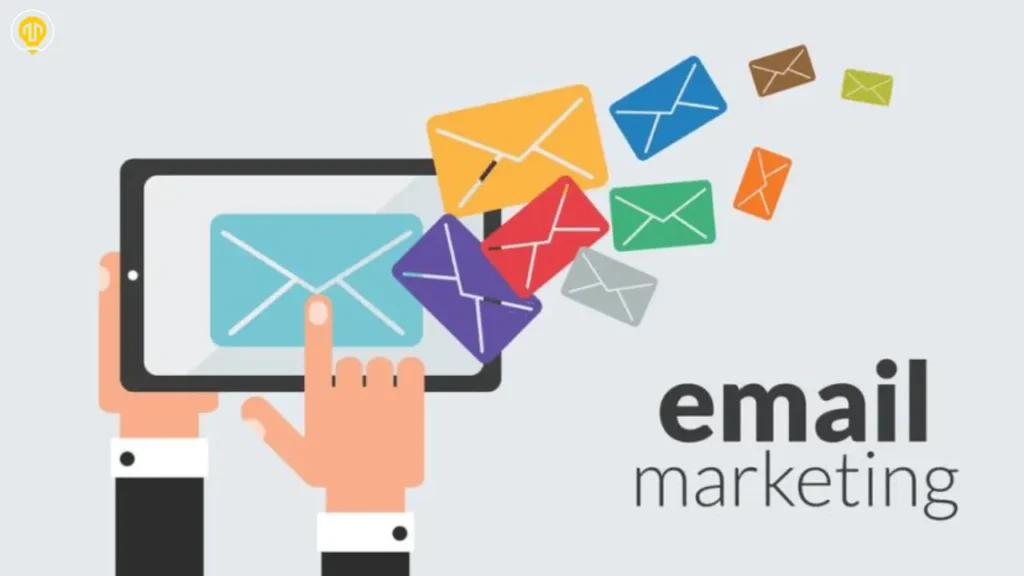
Thinking about starting email marketing but not sure where to begin? This guide walks you through every step—building your list, crafting great emails, and using smart strategies that actually work in 2025. Whether you’re a beginner or just looking to improve, you’ll find practical tips to grow your business with email.

